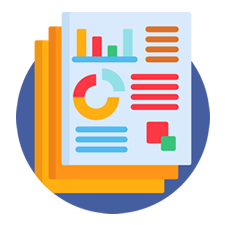Key Features:
- No of Pages: 80
- No of Chapters: 5
- References Included
Introduction:
Abstract
This study was conducted to evaluate the socio-economic analysis of small scale fish farming enterprise of the Lagos state fish farming estate in Ikorodu, Nigeria. The primary data were obtained from 60 respondents with structured interview guides, which were selected using simple sampling techniques. The results reveals that the majority (88.3%) of the fish farmers are male while (31.40%) are in the active age distribution of 31-40 years, university education (63.0%) and (58.3%) were married, majority (73.4%) of the respondent had a household size that range between 3 -5 persons. Results of the Descriptive analyses and tests of significance however showed that there was is a significant relationship between socio-economic characteristics and constraint of fish farming in the estate, there is also a significant relationship between income of fish farmers and constraints of the fish farm enterprise. Implications of these findings were critically examined, and pertinent recommendations were proffered based on the salient findings in the study.
Table of Content
Title page
Declaration
Certification
Dedication
Acknowledgement
Abstract
Table of Content
CHAPTER ONE
1.1 Introduction
1.2 Problem Statement
1.3 Objectives of the Study
1.4 Hypotheses
1.5 Justification of the Study
1.6 Limitation of the Study
CHAPTER TWO
2.0 Literature review
2.1 An overview of Aquaculture in Nigeria
2.2 An overview aquaculture in Lagos state
2.3 Current Situation of aquaculture in Nigeria
24 Aquaculture in Nigeria Economy
2.5 Fish Demand and Supply in Nigeria
2.6 Major Constraints of Aquaculture Development
2.7 An overview of small-scale fish farming
2.7.1 Problems faced by small-scale enterprises
2.7.2 Challenges faced by small-scale fish farming
2.8 Advantages of fish farming
2.9 Contribution of Fisheries to National Economy
2.10 Lagos State and Its Growth
2.10.1 Geology and Relief
2.10.2 Development Programmes of Lagos State
CHAPTER THREE
3.0 material and method
3.1 Source of data
3.2 Collection of Data
3.3 Validation of research instrument
3.4 Reliability of the instrument
3.5 Description statistical tool
CHAPTER FOUR
4.0 Result
4.1 Demographic Characteristic of Respondent
4.2 Continuation of the Demographic Characteristics of Respondent
4.3 Nature of fish farming production
4.4 Type of culture system used
4.5 Culturing structure
4.6 Reason for Fish farming and total number of ponds/tanks
4.7 Fish Farm Size (plot)
4.8 Level of Fish Production
4.9 The type of record kept
4.10 Reason for Keeping Records
4.11 Production Information
4.12 Form of Selling Fish
4.13 Problems encountered with labour accusation
4.14 Harvest per year
4.15 Average weight per fish
4.16 Factors determining yield
4.17 Market structure
4.18 Do you process the fish before Sales
4.19 Level of production
4.20 Constraint/problems encountered by the respondent in the fish farming Estate 52
4.21 Hypotheses testing
CHAPTER FIVE
5.0 Discussion
5.2 Summary
5.3 Conclusion
5.4 Recommendation
References
Appendix
Introduction
The introduction of this research is only available in the paid version.
Buy Now
